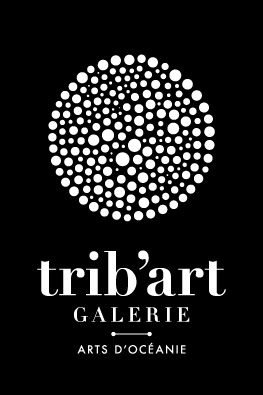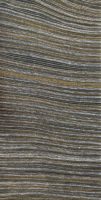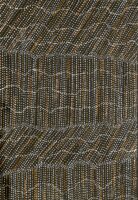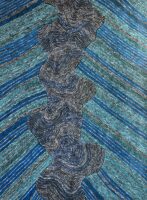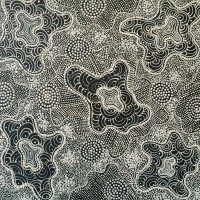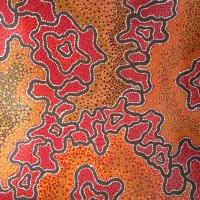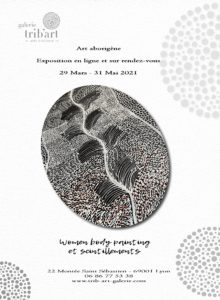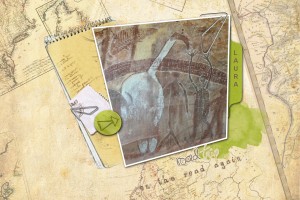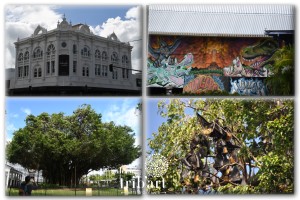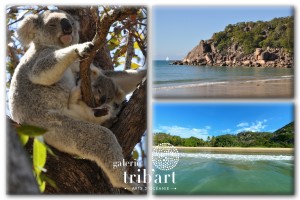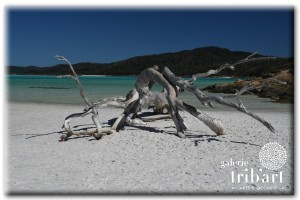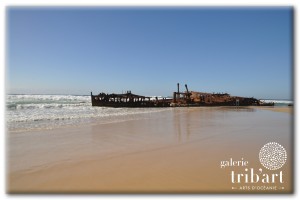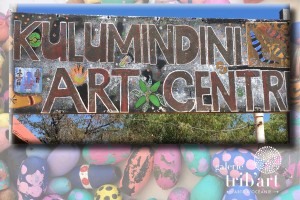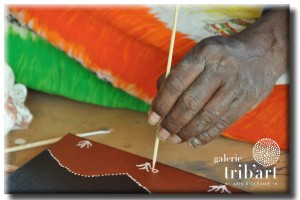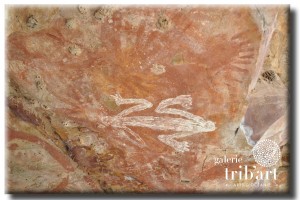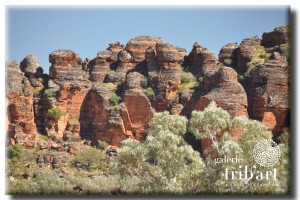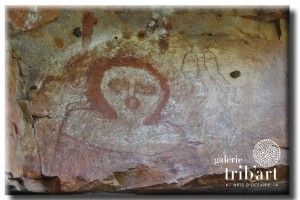Acrylique sur toile
122 x 30 cm
2014
Prix :
Vendu
Ngapa Tjukurrpa
Ngapa Tjukurrpa (Water Dreaming) – Puyurru
Le site décrit par cette œuvre est à Puyuru à l’est de Yuendumu. Dans les lits des rivières habituellement à sec nous pouvons voir des traces des torrents (les « Mulju ») qui s’écoulent lors des pluies torrentielles qui peuvent s’abattre dans la région. Les « Kirda » (les propriétaires) du site sont les femmes Nangala/Nampijinpa et les hommes Jangala/Jampijinpa.
Deux hommes Jangala, faiseurs de pluie, chantèrent la pluie jusqu’à provoquer un orage gigantesque. Cet orage traversa la région d’est en ouest. Ce voyage s’effectua avec le « pamapardu Jukurrpa », c’est à dire le « rêve de la termite ».
A ce point du temps du rêve (de l’œuvre) nous avons un passage qui inclut la formation des nuages. Le « rêve » de pluie évoque ensuite les lieux où se forment les nuages, sur la colline de Ngamangama.
Peinture d’Australie – Art Aborigène
The site depicted in this painting is Puyurru, west of Yuendumu. In the usually dry creek beds are water soakages or naturally occurring wells. Two Jangala men, rainmakers, sang the rain, unleashing a giant storm. It travelled across the country, with the lightning striking the land. This storm met up with another storm from Wapurtali, to the west, was picked up by a ‘kirrkarlan’ (brown falcon [Falco berigora]) and carried further west until it dropped the storm at Purlungyanu, where it created a giant soakage. At Puyurru the bird dug up a giant snake, ‘warnayarra’ (the ‘rainbow serpent’) and the snake carried water to create the large lake, Jillyiumpa, close to an outstation in this country. This story belongs to Jangala men and Nangala women. In contemporary Warlpiri paintings traditional iconography is used to represent the Jukurrpa, associated sites and other elements. In many paintings of this Jukurrpa curved and straight lines represent the ‘ngawarra’ (flood waters) running through the landscape. Motifs frequently used to depict this story include small circles representing ‘mulju’ (water soakages) and short bars depicting ‘mangkurdu’ (cumulus & stratocumulus clouds).
